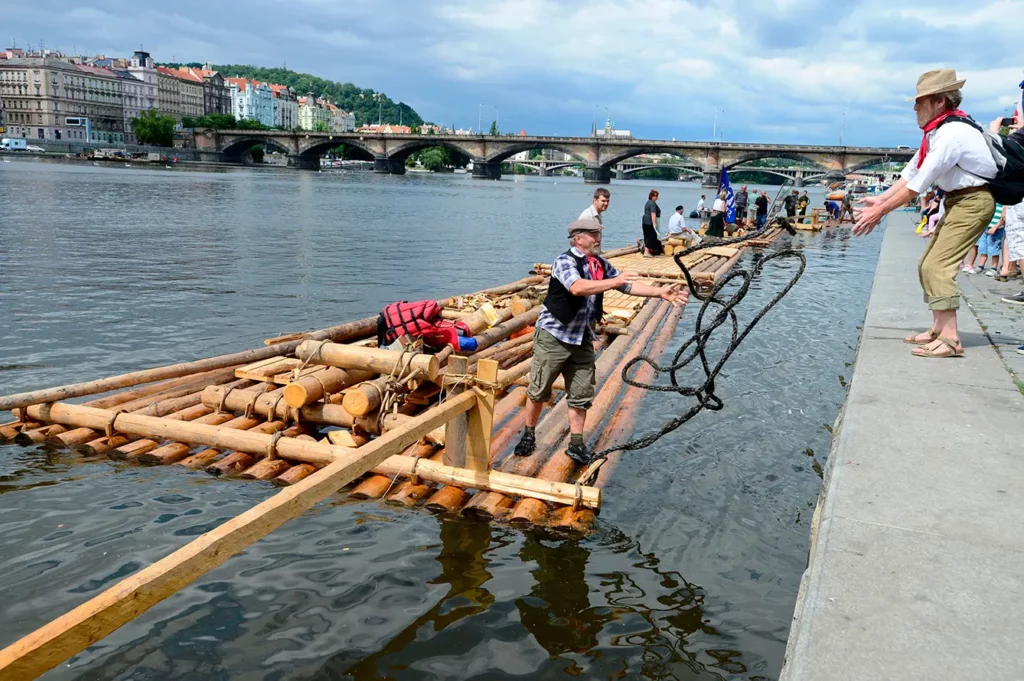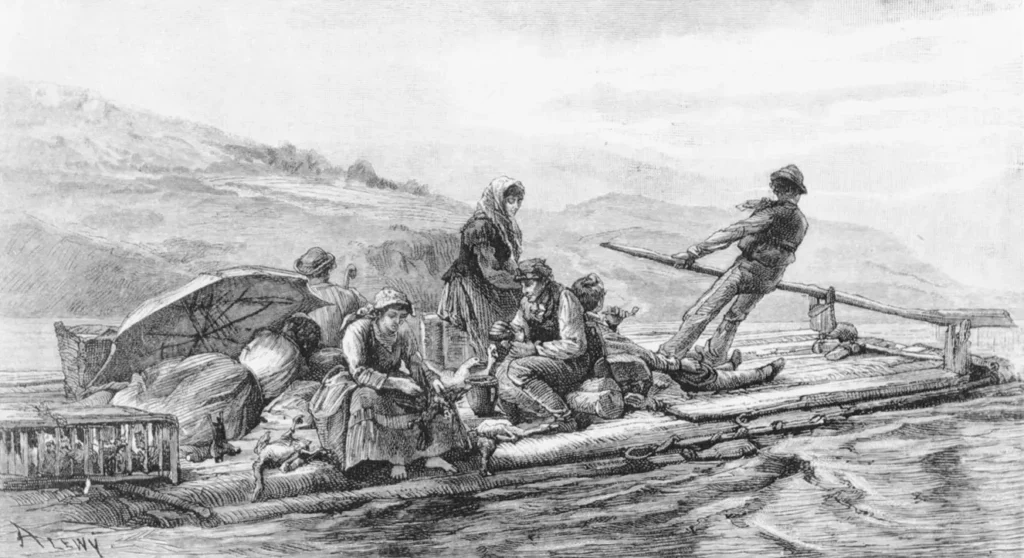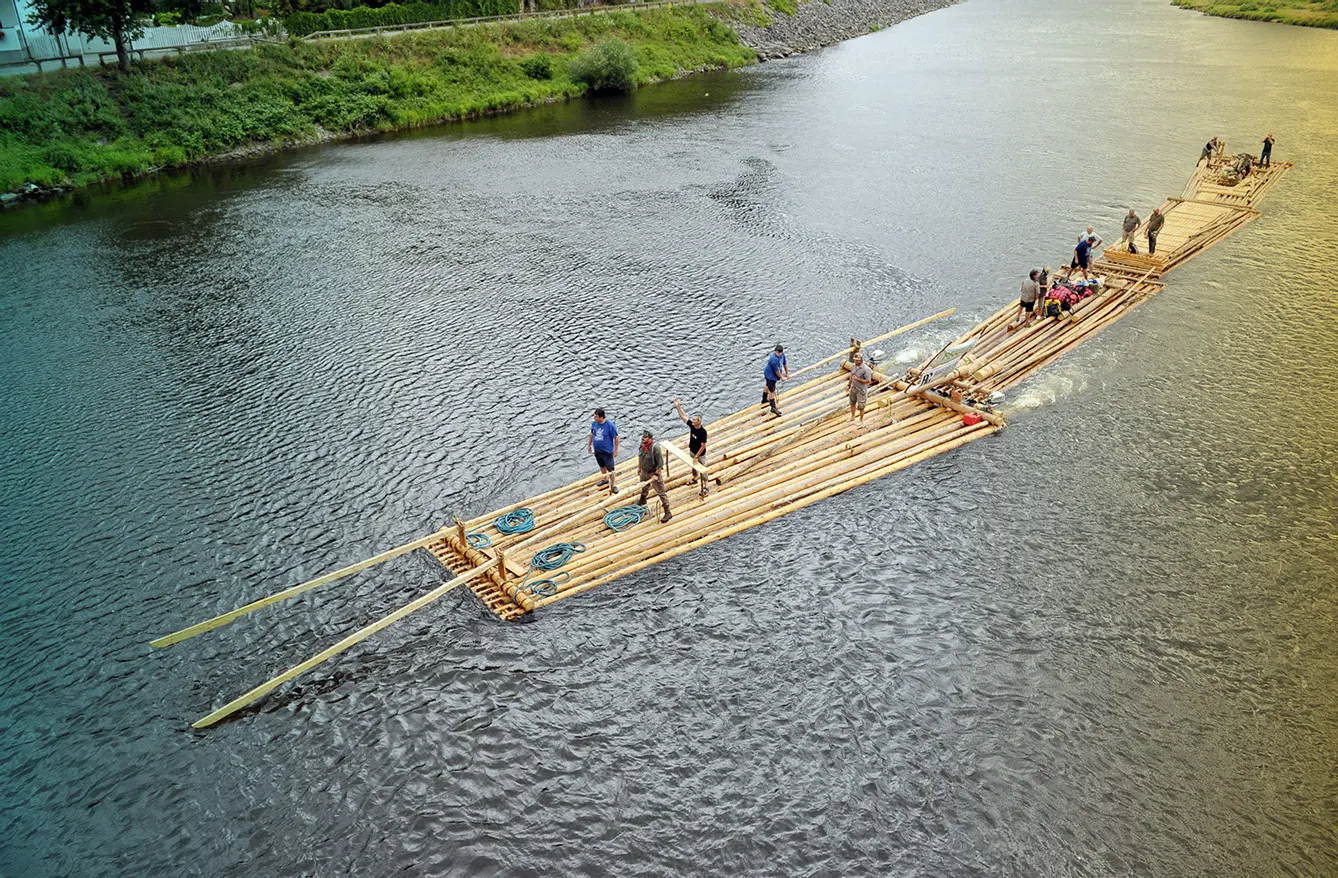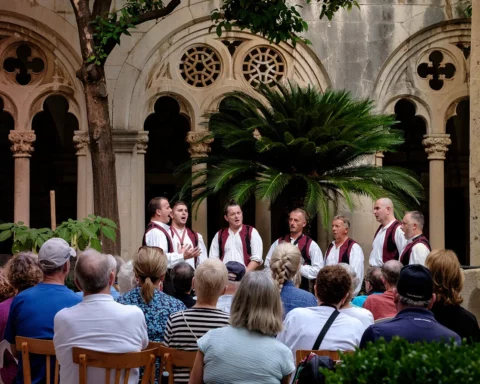On Thursday, 1 December 2022, timber rafting, an old tradition associated with building rafts from timber and sailing them down rivers, was added to the UNESCO Intangible Cultural Heritage List. Although rafting as commercial transportation has disappeared entirely with the construction of dams on European rivers, the traditions associated with it are still alive and passed on to younger generations. Apart from the Czech Republic, three other Three Seas Region countries: Latvia, Poland, and Austria, have jointly sought recognition of the rafting tradition by UNESCO.
Timber rafting in Czechia
The first mention of timber rafting on the Vltava River dates to the 11th century. It is believed that historically, rafters sailed on all navigable rivers, for example, the Vltava, Malše, Orlice, and Elbe. Rafting was among the most esteemed, respected, and dangerous professions.



Timber rafting experienced a significant boom in the 14th century when King Charles IV. recognized it as a major industry and decided to issue multiple customs regulations. The most remarkable timber rafting era came in the 16th century when rafts began to be officially used as a means of transport for goods from Austria, primarily for Austrian salt from Salzburg. At that time, an extensive campaign began to modify the rivers to accommodate as many rafts and ships as possible.
What is timber rafting?
What is timber rafting anyway? It is pretty straightforward. It starts in the deep forests of Czechia. Let’s take the virgin Krkonoše Forests as an example. A couple of loggers cut down trees in Krkonoše and roll them down to the river. The raftsmen drop them into the water and tie them together, making rafts out of them. Then they board them with vessels and sail the timber rafts downstream to a nearby sawmill to get them cleaned, cut, and utilized. Sometimes, those sawmills were tens of kilometers away, making it hazardous work since the rivers were not regulated then.
Over time, timber rafting slowly vanished due to the development of the railways. But not only that, but it was also the development of the Vltava Cascade on the Vltava River, a series of large dams that ultimately put a full stop to timber rafting.
UNESCO success
Recognizing rafting as an intangible heritage of UNESCO has been a long and arduous journey. First, the Czech Republic and other countries involved had to submit an initial application. Then, the tradition had to be registered as a Czech intangible heritage. After several years and with the consent of the other states, timber rafting could officially begin the journey to UNESCO nomination.
And then, after many years and a rigorous process, it finally happened. The nomination of timber rafting was approved on 1 December 2022 by the Intergovernmental Committee for the Safeguarding of the Intangible Cultural Heritage at its 17th session in Morocco. An old traditional craft of many European countries, has been added to the UNESCO International Representative List of the Intangible Cultural Heritage of Humanity.







